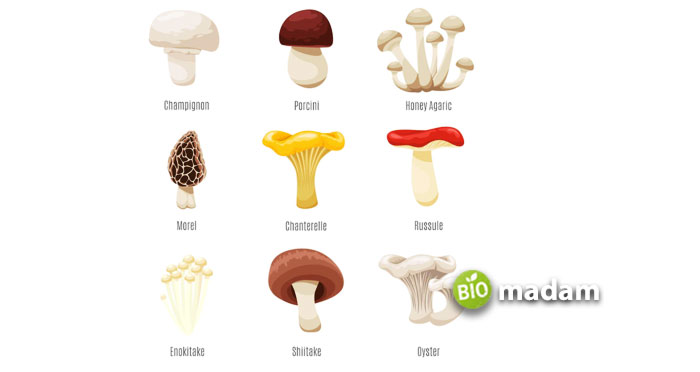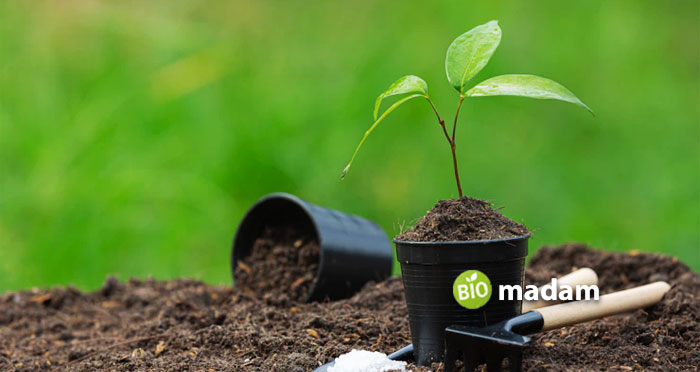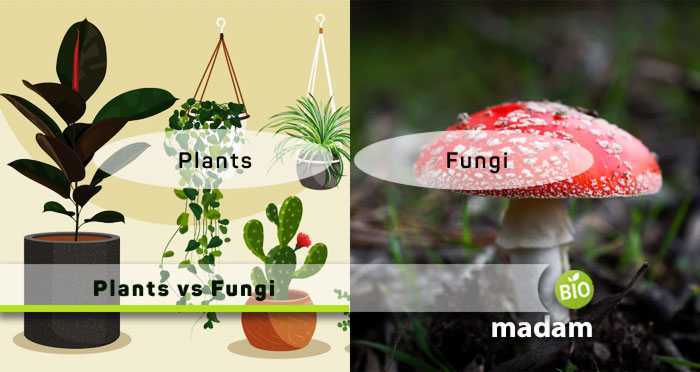Plants and fungi are two of the kingdoms of the five-kingdom classification of living things. Each of the kingdoms is specified based on particular characteristics common to organisms of that kingdom. Previously, fungi were considered one kind of plant, yet they were distinguished after their microscopic examination.
One of the major differences between plants and fungi is plants’ ability to make food. While you know that plants can make their food through photosynthesis, fungi do not possess this ability and solely rely on nutrients obtained from other organisms. Fungi do not perform photosynthesis and are classified as a different kingdom. There are numerous other dissimilarities between the two. Let’s talk about them in detail.
Comparison Table
| Characteristic | Plants | Fungi |
| Trophic | Autotroph | Heterotroph |
| Structure | Stem, roots, leaves | Mycelium, hyphae |
| Types | Flowering, non-flowering, trees, shrubs, etc. | Ascomycota, Zygomycota, Basidiomycota, Deuteromycota |
| Cell Wall | Cellulose | Chitin |
| Chloroplasts | Present | Absent |
| Nucleus | Uninucleate | Uninucleate/multinucleate |
| Reproduction | Sexually | Sexually and asexually |
| Food Storage | Starch | Glycogen |
| Food Chain Placement | Producers | Decomposers |
| Examples | Rose, Orange, Thyme | Yeast, Molds, Mushrooms |
What are Plants?
Plants are autotrophic multicellular organisms that have a proper structure that performs various functions. They are mainly involved in photosynthesis and respiration. Photosynthesis occurs with the help of chloroplasts present in plants and occurs during the day primarily. Oxygen is released as a byproduct of photosynthesis which plays a vital role in the sustenance of life. On the other hand, respiration in plants occurs at night and utilizes carbon dioxide.
Plants are the primary producers of the ecosystem as they do not rely on anyone for their food and act as a food source for many other organisms. More than 300,000 species of plants have been discovered, including trees, shrubs, bushes, etc. Many animals and insects feed on plants, and these animals are known as herbivores.
Types of Plants
Plants are categorized into many groups based on different characteristics. They are divided according to their size, vascularity, life cycle, and seeds. Their major classification is flowering and non-flowering, depending on whether that particular plant type has flowers.
The classification of plants according to size is:
Trees
Trees are the most widely seen, tallest plants. They are also quite strong and have a thick stem known as the trunk. The trunk further divides into branches that bear several leaves types, flowers, and fruits.
Shrubs
Shrubs may be called smaller trees with soft stems. They do not have a thick, hard stem and are usually up to a meter in height. You may come across taller shrubs, yet they are not as tall as trees. Some common shrubs are Basil, cherry, etc.
Creepers
Creepers are plants with weak stems that cannot bear their weight and crawl on the ground. They are fragile and have long stems.
Climbers
Climbers are similar to creepers, but they do not crawl on the ground. Instead, they climb vertically with the help of external support and can somehow manage their weight. They are often planted on the outer walls to give a pretty, greener look.
Herbs
Herbs are the smallest of plants and are only a few centimeters long. They are loaded with nutrients and used in cooking globally. Some of the popular herbs are thyme, ginger, mint, etc.

What are Fungi?
Fungi are another kingdom in the classification of living organisms. While they initially counted as plants, later, they were separated based on characteristics like chitin cell wall and absence of chlorophyll. They are believed to be the most abundant organisms around us. Fungi are eukaryotic, but neither can they move nor produce their own food. They grow from hyphae and decompose material to obtain nutrients.
Fungi are widely distributed around us, with more than 144,000 species from different genera discovered by researchers. They are of high medical and culinary importance. Fungi-like mushrooms are a common delicacy in many international cuisines, whereas yeast is a component of bread enjoyed vastly worldwide.
Types of Fungi
Fungi are divided into four types depending on their reproduction. They are:
Basidiomycota
Basidiomycota is a group of fungi also known as club fungi. It contains around 16,000 species that act as plant decomposers. They bear basidiospores on the club-shaped Basidium.
Zygomycota
Zygomycota is the most common group of fungi around us. They are known as bread molds and have rapidly growing hyphae, and reproduce asexually through spores. They are typically multicellular, but some depict unicellular growth. The name Zygomycota comes from Zygosporangia, which can be dormant for a long time.
Ascomycota
Fungi belonging to Ascomycota are also known as sac fungi and are actively involved in the spoilage of food. There are around 30,000 Ascomycota species consisting of red, blue-green, and brown molds. While some are edible, including truffles, others are harmful to plants. Their septate hyphae distinguish them. Reproduction in Ascomycota occurs by Conidia that arise at the tip of Hyphae in Conidiophores.
Deuteromycota
Deuteromycota has also been known as Fungi Imperfecti as they lack sexual stages and are not typically categorized on the basis of reproduction. They usually reproduce asexually but are one of the most flourishing fungi. They have high medical importance and are often used in antibiotics.

Similarities Between Plants and Fungi
- Plants and fungi (most) are multicellular organisms.
- They both have a cell wall.
- Plants and fungi possess a membrane-bound nucleus, specified for several functions.
- They lack motility and cannot move from one place to another like animals
Difference Between Plants and Fungi
Definition
Plants are autotrophic multicellular organisms that produce oxygen.
Fungi
On the other hand, fungi belong to the Kingdom of Fungi and reproduce through spores.
Structure
Plants
Plants have a definite structure with a stem, branches, leaves, and roots.
Fungi
Yet, fungi are different from plants in structure and have hyphae and mycelium.
Types
Plants
Plants are categorized into vascular and non-vascular plants, flowering and non-flowering plants, trees, shrubs, herbs, creepers, climbers, etc.
Fungi
Alternatively, the four types of fungi are Ascomycota, Basidiomycota, Zygomycota, and Deuteromycota.
Cell Wall
Plants
The cell wall of plants is made up of cellulose.
Fungi
Alternatively, the fungi cell wall is composed of chitin.
Chloroplasts
Plants
Plants contain chloroplasts that help them in photosynthesis.
Fungi
While fungi do not have chloroplasts, photosynthesis does not occur.
Nucleus
Plants
A typical plant cell is uninucleated to perform several functions.
Fungi
Conversely, fungi may have one or multiple nuclei.
Reproduction
Plants
Plants reproduce sexually through seeds.
Fungi
On the other hand, fungi show sexual as well as asexual reproduction. It occurs through spores.
Food Storage
Plants
Plants store their food in the form of starch.
Fungi
In contrast, food in fungi is stored as glycogen.
Food Chain Placement
Plants
Plants are the producers as they produce their food and provide nutrients to other organisms.
Fungi
In comparison, fungi are involved in the breakdown of dead material and are called decomposers.
Examples
Plants
Examples of plants include roses, oranges, thyme, etc.
Fungi
Different examples of fungi are molds, yeasts, mushrooms, etc.

The Bottom Line
While plants and fungi have a few features in common, like both being eukaryotic multicellular organisms, some of their characteristics distinguish them from each other. Plants have a cellulose cell wall, whereas fungi have a chitin cell wall. Fungi are heterotrophs and rely on other organisms to obtain nutrients, but plants are autotrophs and produce their own food. Both are essential parts of the biome and ecosystem and play critical roles in life sustenance.

Anna has completed her degree in Pharmacy from the University of Hawaii. She is serving as a research assistant in a pharmaceutical company. She had a great interest in writing blogs, traveling to different parts of the US, and trying delicious recipes in her spare time.

